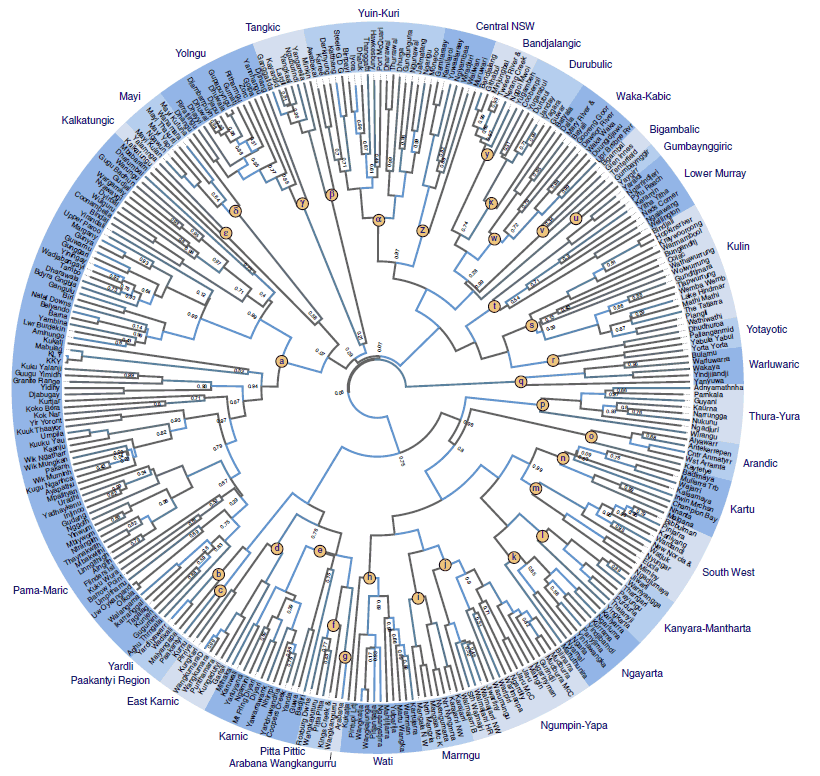Yet another questionable paper by Nature, The origin and expansion of Pama–Nyungan languages across Australia, by Bouckaert, Bowern & Atkinson, Nat Ecol Evol (2018).
Abstract:
It remains a mystery how Pama–Nyungan, the world’s largest hunter-gatherer language family, came to dominate the Australian continent. Some argue that social or technological advantages allowed rapid language replacement from the Gulf Plains region during the mid-Holocene. Others have proposed expansions from refugia linked to climatic changes after the last ice age or, more controversially, during the initial colonization of Australia. Here, we combine basic vocabulary data from 306 Pama–Nyungan languages with Bayesian phylogeographic methods to explicitly model the expansion of the family across Australia and test between these origin scenarios. We find strong and robust support for a Pama–Nyungan origin in the Gulf Plains region during the mid-Holocene, implying rapid replacement of non-Pama–Nyungan languages. Concomitant changes in the archaeological record, together with a lack of strong genetic evidence for Holocene population expansion, suggests that Pama–Nyungan languages were carried as part of an expanding package of cultural innovations that probably facilitated the absorption and assimilation of existing hunter-gatherer groups.

Even with my absolute lack of knowledge on Australian languages, I am not conviced. Not at all.
I have already expressed more than once my opinion on Glottochronology – and the improved method of this paper seems like the final twist of the screw for its strongest proponents.
Interestingly, this paper includes the same journal, author, and (mostly) method of the famous Language-tree divergence times support the Anatolian theory of Indo-European origin (2003).
And we have also seen how most suggested prehistorical cultural diffusion events were actually migrations, so it seems rather odd to dare publish this right now.
At a time of groundbreaking genomic papers being published on South-East Asian migrations, and probably expecting more on the region – including Australia – , this paper seems to me quite unnecessary.
It will especially not help Nature make forget its latest fiasco on Indo-European migrations.
See also:
- Ancient genomes document multiple waves of migration in south-east Asian prehistory
- Genomics reveals four prehistoric migration waves into South-East Asia
- Population turnover in Remote Oceania shortly after initial settlement
- Language continuity despite population replacement in Remote Oceania
- Genomic history of South-East Asia: eastern Polynesians, Peninsular Malaysia and North Borneo
- Islands across the Indonesian archipelago show complex patterns of admixture
- Two more studies on the genetic history of East Asia: Han Chinese and Thailand
- Reconstructing the demographic history of the Himalayan and adjoining populations
- Ancient Di-Qiang people show early links with Han Chinese